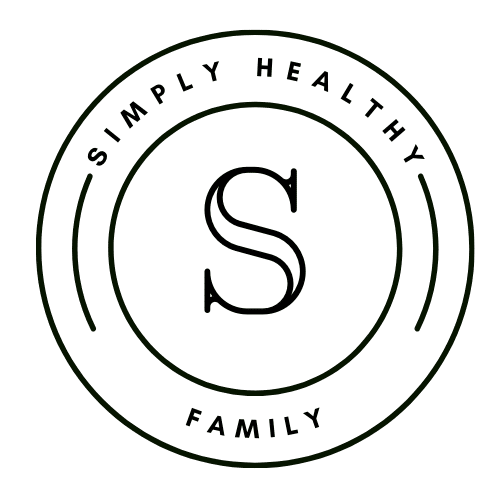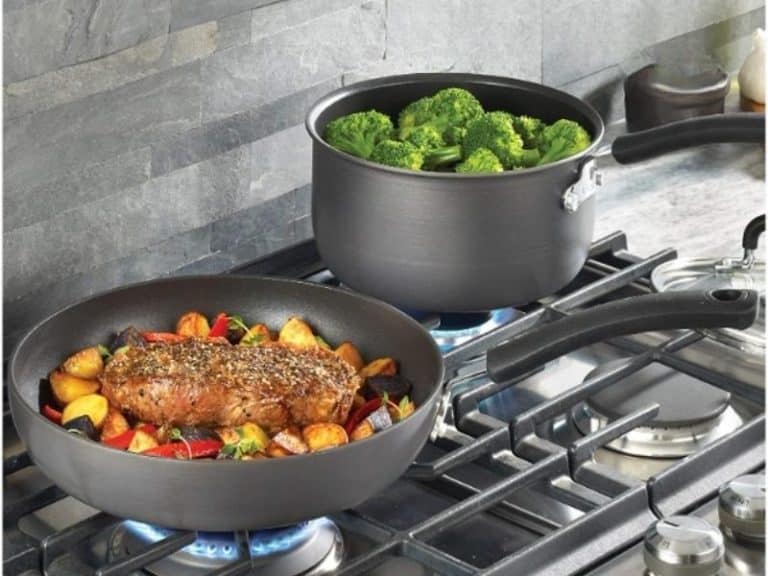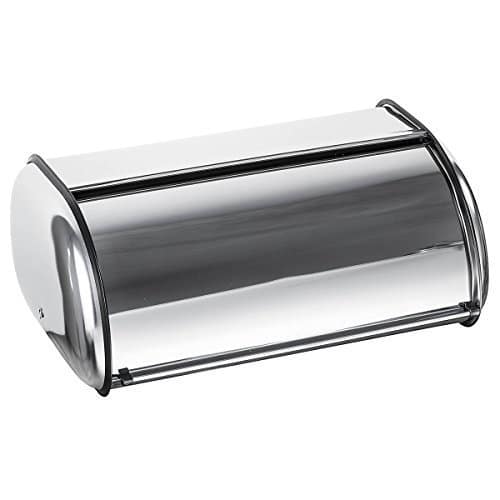Can You Microwave Styrofoam? A Guide to Microwaving Safely
A question often asked, but not always easy to answer. Safety depends on use, and following guidelines for the safe use of styrofoam is necessary to ensure safety. So let’s start with a little background.
What is a microwave oven and how does it work?
Microwave ovens work by heating the water molecules in food. That is why they are so quick and efficient. Since the packaging generally known as “styrofoam” contains no water molecules, it does not actually heat up in the microwave.
However, because your microwave oven channels heat energy directly to the molecules inside the food, the heat from the food can heat your container, too. That’s why you can’t microwave mason jars, because the heat from the microwave can explode the glass. Styrofoam has a similar problem. If you microwave a styrofoam container, there is a chance the styrofoam will melt.
Read Article: Can you Freeze Cream Cheese?
What is Styrofoam?
Did you know that styrofoam is actually just a brand name? The material we all refer to is actually called expanded polystyrene (EPS). So what is it?
What is Expanded Polystyrene (EPS)?
Polystyrene is actually another type of plastic. Plastic is expanded with 95% air, which turns it into a kind of foam that is used in those ubiquitous white “hot” cups, as well as styrofoam food packaging, and packaging “peanuts”. It has insulating properties for hot foods and beverages.
This product, which we will henceforth refer to as styrofoam, due to overwhelming popular use of the name, creates serious environmental problems, however convenient it may be. The overuse of styrofoam, worldwide, is saturating the planet, and wreaking havoc on the ocean.
Because styrofoam is 95% air, it floats; following waterways to the ocean, where it is frequently ingested by marine life.
Another problem with styrofoam and the environment is that it is lightweight (another factor related to its being most air. It is easily carried by wind and can escape landfill to cause problems, littering streets and beaches, clogging storm pipes, and harming animals.
The Department of Sanitation has also concluded that expanded polystyrene cannot be recycled, despite the fact that many containers display the recycling symbol.
Many cities, such as New York and San Francisco, have begun to ban the use of styrofoam. This, despite the fact that it is one of the most low-cost packaging options.
Regardless, companies such as McDonald’s, Jamba Juice, Dunkin Donuts, and IKEA have pledged to phase out their use of Styrofoam. It’s just that bad.
Beyond the negative impact of styrofoam on the environment, it also contains styrene, which is a harmful chemical that can leach into food and drink. Styrene is classified as a carcinogen to humans according to the National Research Council. Alternatives to styrofoam include mushroom-based packaging, which is compostable and convenient.
Styrofoam In the Microwave
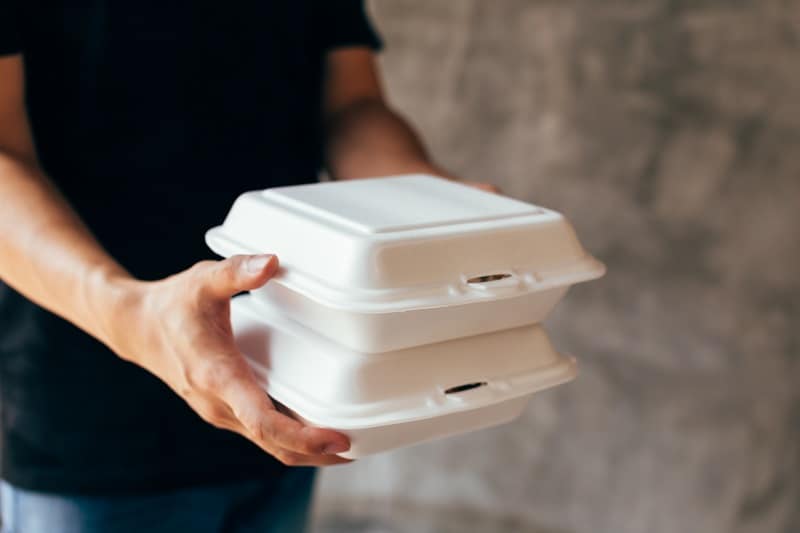
If your container doesn’t have a microwave-safe symbol, it is not recommended to put it in the microwave. The microwaveable symbol looks like a microwave with wavy lines.
The standard symbol can vary, due to the fact that these products are manufactured all over the world. Also, variations in international standards can mean that these symbols are not always trustworthy.
However, the FDA certifies microwave-safe styrofoam products that can be safely used in the microwave, as long as they are not overheated. Overheating can cause heated food to melt the plastic in the styrofoam, releases carcinogens into your food.
Although it is a myth that microwaving plastic containers and wraps releases harmful, cancer-causing dioxins into food, microwave-safe plastic containers and wraps are safe to use in the microwave. Despite what you may have read out there, plastics do not contain dioxins.
Dioxins are created, however, by burning plastics. So be careful not to burn food in the microwave, even in microwave-safe containers. Plastic containers that are not intended for use in the microwave could melt and potentially leak chemicals into your food.
Polystyrene contains the toxic substances styrene and benzene, suspect carcinogens and neurotoxins that are hazardous to humans. Hot foods and liquids actually start a partial breakdown of the styrofoam, causing some toxins to be absorbed into the food.
Polystyrene (and most high molecular weight polymers) are in no way soluble in water, and even if 50 percent of your cup were to melt, you will not be absorbing any appreciable amount through the water in your cup.
To keep things simple, there are two basic types of styrofoam; one is microwave safe and the other is not. If your container is marked as “microwave safe” you can use it, and if not, move your food or drink to a clearly marked, microwave-safe container.
So what is the bottom line: Is Styrofoam microwave safe?
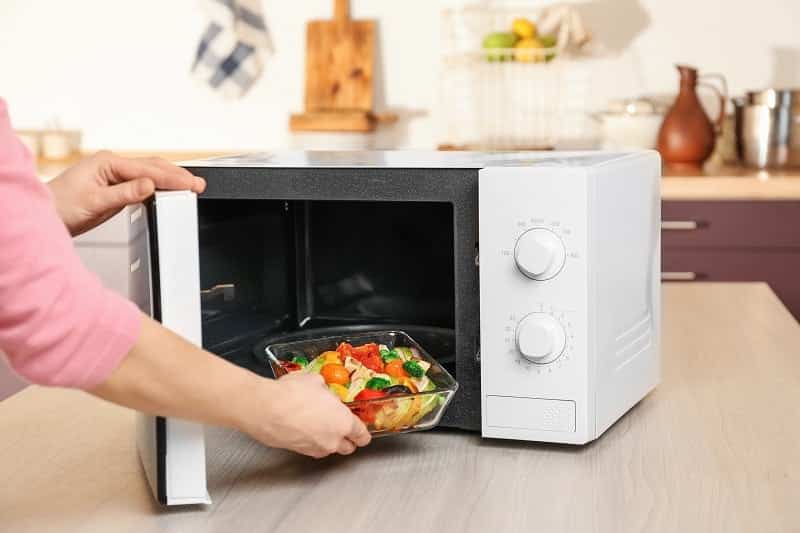
Contrary to popular belief, some styrofoam and other polystyrene containers can safely be used in the microwave. Just check the label.
Recommendations for safely using plastics to heat food in the microwave:
-
If you’re worried about poisons leaching from plastics into your food, transfer food to glass or ceramic containers labeled for microwave-safe usage.
2. Use wax paper, kitchen parchment paper, white paper towels, or a domed container that fits in your microwave oven as better alternatives to plastics.
3. Vent plastic containers by opening a crack the opening to protect leaching of dangerous chemicals.
4. Microwavable takeout dinner trays are formulated for one-time use only and will say so on the package.
5. The older or more damaged the container, the more leaching you may have of toxic chemicals found in plastics and styrofoam. When in doubt, toss it.
6. Most takeout containers, water bottles, and plastic tubs, or jars made to hold margarine, yogurt, whipped topping, and foods such as cream cheese, mayonnaise, and mustard are not microwave-safe. Be advised.
7. Don’t microwave plastic storage bags or plastic bags from the grocery store.
You might want to read this article: All About Cooking Oil
Summary
When it comes to your health, you don’t want to take chances. Although it may be safe to use styrofoam and other plastic containers marked microwave-safe, you must be very careful to vent your food and be sure not to burn it.
You may want to avoid risk and simple transfer your food to a glass or ceramic container to heat in the microwave; as the old adage goes: better safe than sorry.
Related Articles:
- https://www.simplyhealthyfamily.org/best-countertop-convection-oven/ – get only the best when it comes to baking!
